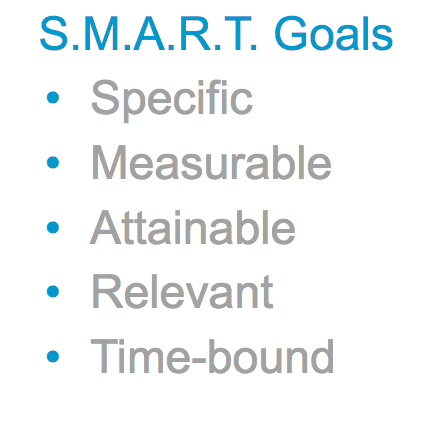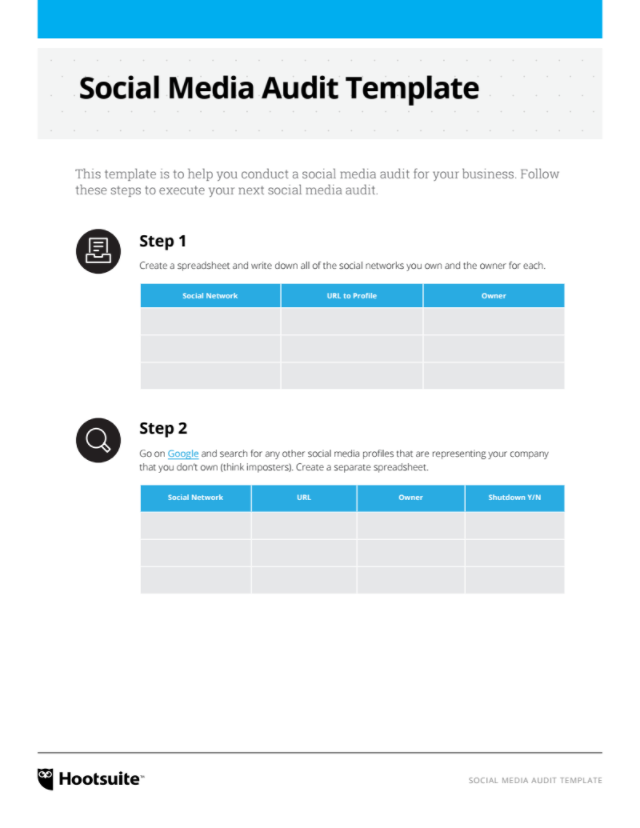So you need to create a social media marketing plan. Learn what a social media marketing plan should include, and follow our six-step plan for creating your own. What is a social media marketing plan? A key component of setting effective goals for your social media strategy is to determine what metrics you’ll use to measure their success. Take the time you need to determine the purpose of every social profile you have. Here are a few suggested sources of inspiration in different areas of social media marketing: Content marketing: Unbounce, Virgin Social media customer service: Tangerine, Warby Parker Social media advertising: Airbnb, the American Red Cross Facebook strategy: Coca-Cola, Walmart Twitter strategy: Charmin, Oreo Instagram strategy: Herschel Supply Co., General Electric Snapchat strategy: Taco Bell, Amazon Step 5: Create a content marketing plan and a social media content calendar Having great content to share will be essential to succeeding at social media. Your social media marketing plan should include a content marketing plan, comprised of strategies for content creation and content curation, as well as a content calendar. How often will you post content? It’s the perfect place to plan all of your social media activities—from images and link sharing to blog posts and videos—encompassing both your day-to-day posting and content for social media campaigns. Once you’ve mapped out your social media marketing plan, use Hootsuite to schedule all of your social media posts, engage with your followers, and track the success of your efforts.

So you need to create a social media marketing plan. No easy task, right? Many of us struggle to iron out exactly what that is, let alone figure out how to build one from scratch.
Put simply, every action you take on social networks should be a part of a larger social media marketing strategy. That means every post, reply, like, and comment should all be guided by a plan that’s driving toward business goals. It might sound complicated, but if you take the time to create a comprehensive social media strategy, the rest of your social efforts should follow naturally. Everyone can do this if they approach it correctly.
Learn what a social media marketing plan should include, and follow our six-step plan for creating your own.
Bonus: Get the step-by-step social media strategy guide with pro tips on how to grow your social media presence with Hootsuite.
What is a social media marketing plan?
A social media marketing plan is the summary of everything you plan to do and hope to achieve for your business using social networks. This plan should comprise an audit of where your accounts are today, goals for where you want them to be in the near future, and all the tools you want to use to get there.
In general, the more specific you can get with your plan, the more effective you’ll be in its implementation. Try to keep it concise. Don’t make your social media marketing strategy so lofty and broad that it’s unattainable. The plan will guide your actions, but it will also be a measure by which you determine whether you’re succeeding or failing. You don’t want to set yourself up for failure from the outset.
Step 1: Create social media marketing objectives and goals
The first step to any social media marketing strategy is to establish the objectives and goals that you hope to achieve. Having these objectives also allows you to quickly react when social media campaigns are not meeting your expectations. Without goals, you have no means of gauging success or proving your social media return on investment (ROI).
These goals should be aligned with your broader marketing strategy, so that your social media efforts drive toward your business objectives. If your social media marketing strategy is shown to support business goals, you’re more likely to get executive buy-in and investment.
A key component of setting effective goals for your social media strategy is to determine what metrics you’ll use to measure their success. Go beyond vanity metrics such as retweets and likes. Focus on things such as leads generated, web referrals, and conversion rate. For more on this, check out our posts on the social media metrics, social ads metrics, and social video metrics that matter.
As you write your goals, keep your audience and customers in mind. Try creating audience or customer personas—archetypes that include details about demographics, interests, pain points, etc.—to test your goals. For example, if you’re trying to determine if a goal is properly fleshed out, ask yourself in what way it will help you reach your audience.
You should also use the S.M.A.R.T. framework when setting your goals. This means that each objective should be specific, measurable, attainable, relevant, and time-bound.

A good example of a well-written S.M.A.R.T. goal might look like this: “For Instagram we will share photos that communicate our company culture. We will do this by posting three photos a week. The target for each is at least 30 likes and five comments.”
A simple way to start your social media marketing plan is by writing down at least three social media goals. Make sure to ask yourself what the goal will look like when completed, and use that to determine how you will track it.
Step 2: Conduct a social media audit
Prior to creating your social media marketing plan, you need to assess your current social media use and how it’s working. This means figuring out who is currently connecting with you via social, which social media sites your target market uses, and how your social media presence compares to your competitors’.
We’ve created a social media audit template that you can follow for each step of the process:

Once you’ve conducted your audit you should have a clear picture of every social account representing your business, who runs or controls them, and what purpose they serve. This inventory should be maintained regularly, especially as you scale your business.
It should also be evident which accounts need to be updated and which need to be deleted altogether. If your audit uncovers fraudulent accounts—a fake branded Twitter profile, for example—report them. Reporting fraudulent accounts will help ensure that people searching for you online only connect with the accounts you manage.
This is the perfect point in the process to assess which channels you want to continue using or potentially add to the mix.
Go back to your audience personas—those archetypes that represent your customers—these will help you determine which channels are most effective for your brand.
When trying to decide which social channels to move forward with, ask yourself two questions:
- Is my audience here?
- If so, how are they using this platform?
Not sure…
COMMENTS